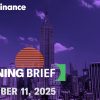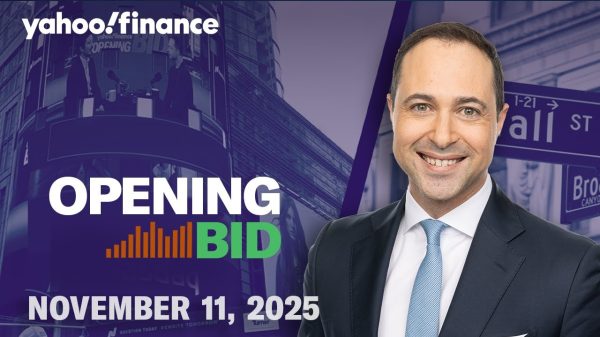Crystal balls that can truly portend the future are scarce, but that doesn’t mean investors are out of luck when it comes to predicting the market’s trajectory.
Treasury yields were a hot topic of conversation in 2023, as many strategists worried that the rising payout on the on the benchmark 10-year Treasury note would act as a headwind to stocks. After all, while investors can’t beat stocks’ long-term appreciation outlook, it’s hard to turn down a basically risk-free 5% return when buying government debt.
Still, investors ignore yields on two-year Treasuries at their own peril, as these often signal where stocks are going.
If the past few years have proven anything, it’s that we live in unusual times, the market included. Stocks had a great 2023 overall, capped by the big year-end rally, even as bonds also got a boost in the so-called “everything rally.” That defied skeptics who (rightly) pointed to how such a scenario is relatively uncommon, given fears that higher interest rates—which push up yields—tend to have a chilling effect on equities. Yet confidence in a soft landing for the economy ruled the day.
So it may not be surprising to hear that stocks are still behaving in unexpected ways, breaking with precedent—year to date, both the
S&P 500
and yields on the two-year T-note are both up, even though stocks nearly always fall when two-year yields are rising.
However, DataTrek Research co-founder Nicholas Colas notes that there are several reasons for the current situation, including the fact that two-year yields have really only increased slightly since the end of 2023. However, per usual, the Federal Reserve’s actions are largely behind the move: The Federal Open Market Committee’s December report called for three interest-rate cuts this year, and only a tiny minority of investors think the Fed will keep rates steady or raise them. Therefore yields can only go so high when interest rates are widely expected to fall.
Nonetheless, Colas argues that despite these near-term factors, the “crystal clear” relationship between two-year Treasuries and stocks will reassert itself.
Because two-year yields are a proxy for the market’s expectations about interest-rate directions, higher yields tend to spook stock investors because they demonstrate the belief that money will remain tight—restraining economic growth, and potentially triggering a recession. Indeed this pattern was in play as recently as 2023’s summer selloff, as two-year yields broke through the psychologically important 5% level. The fact that today’s yield is 4.32% allows stocks more breathing room.
Therefore, the connection isn’t broken, and Colas sees two main reasons to keep a close eye on the two-year note.
“First, there is still some uncertainty about when the Fed will start the rate-cutting cycle. Everything else equal, earlier is better for stock prices because lower two-year rates would signal that the FOMC is ready to begin an easing cycle. Second, two-years capture not just 2024 policy expectations, but 2025 as well. Stocks look forward, and lower short-term yields would signify that we can anticipate a multiyear easing cycle rather than a few reductions this year and then stasis.”
Ultimately investors who want to know which direction the market will take this year have a powerful tool in the two-year note. For his part, Colas thinks we’ll see another year of above-average gains for the S&P 500, helped by a strong outlook for big tech, but “lower two-year rates would increase our confidence in that prediction.”
Of course, investors are also familiar with the two-year T-note for another reason, namely it’s the front end of the U.S. Treasury yield curve. Yield-curve inversion—when longer-term bonds yield less than short-term debt when they should pay more, and may portend an economic downturn—is a classic recessionary signal.
Inversion isn’t infallible—a warning in 2023 didn’t pan out—but seeing it narrow is still likely welcome to investors.
That’s exactly what’s happening now, according to Tradeweb data from late Wednesday: Its data show the two-year/three-year yield spread stood at negative 19.3 basis points, or 3.7 basis points narrower than Tuesday’s close, and 5.7 basis points narrower than 2023’s final close.
So although the spread has been consistently inverted since mid-October, at “its current value, the spread is at its least negative level since early November 2023,” the firm notes.
A day after the S&P 500 hit yet another record close, reasons for ongoing optimism are welcome.
Corrections & Amplifications: The yield on two-year Treasury debt was 19.3 basis points higher than on three-year debt late on Wednesday. An earlier version of this article incorrectly described the figure as the spread between two-year and 30-year debt.
Write to Teresa Rivas at [email protected]
Read the full article here












